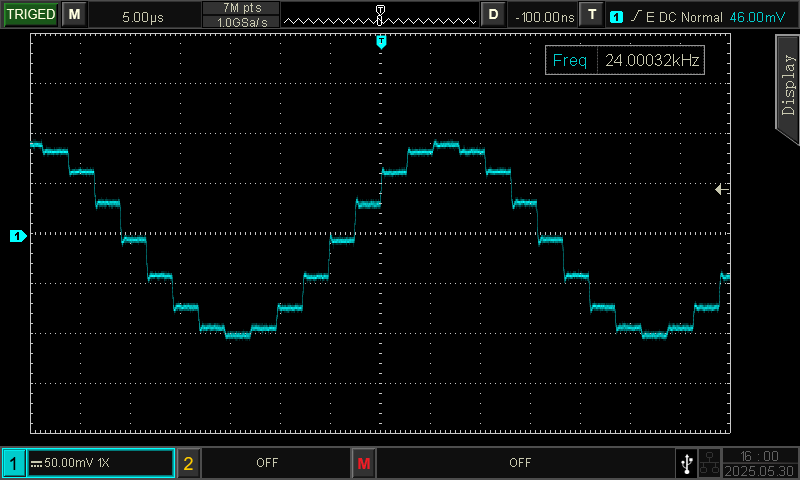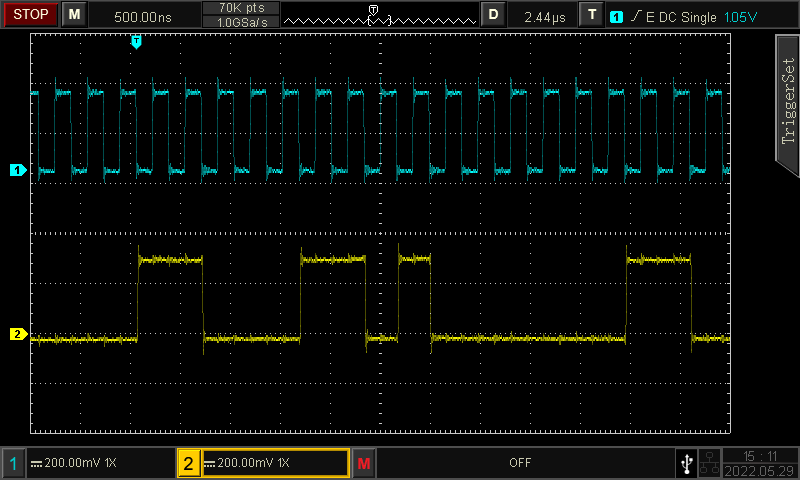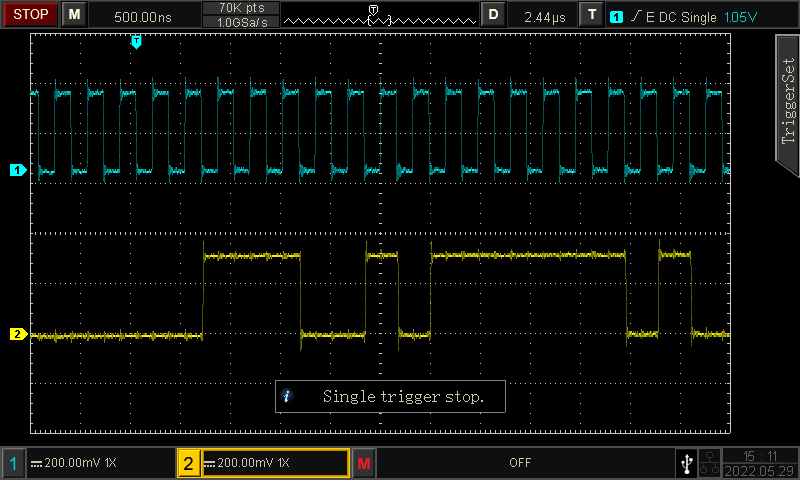Other Parts Discussed in Thread: PGA2311, PCM5102
Tool/software:
Hello,
After using two PCM5102A in an audio application for several months working fine both IC changed behaviour concerning oversampling rate. There is no changing in hard- or software after running the application first, all digital signals and all supply voltages are OK. I attach a screenshot of the DAC output signal.
Conditions are: SCK 12.288 MHz, BCK 3.072 MHz (32 bit per channel), LRCK 48 kHz, sine wave of 24 kHz
Without oversampling there should be two square wave pulses per period, one with a positive and one with a negative amplitude. The number of steps here is 16, so it is 8 times oversampling instead of 256. I tested with SCK input grounded, no difference. Digital signals are generated from SPDIF receiver WM8804, left justified PCM, output of DAC is loaded with RC filter (680R + 2.2nF) and the input of a PGA2311 (Rin 10k).
I can exclude an ESD damage. After detecting this error I populated another board, with two new DAC from the same delivery as the both used ones. The oversampling rate is also not correct.

Hope you have an idea where I should pay attention to.


 working.
working.

